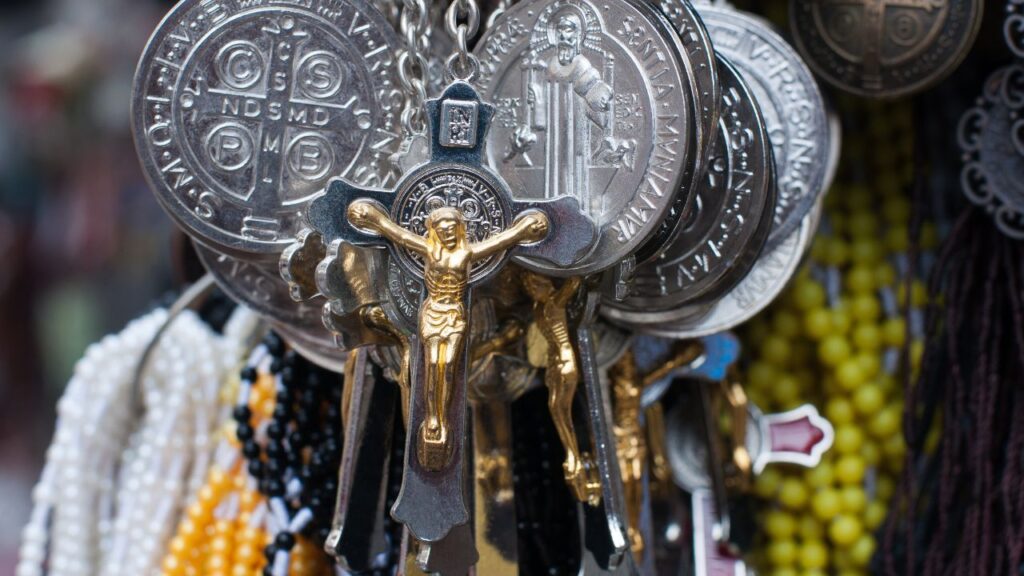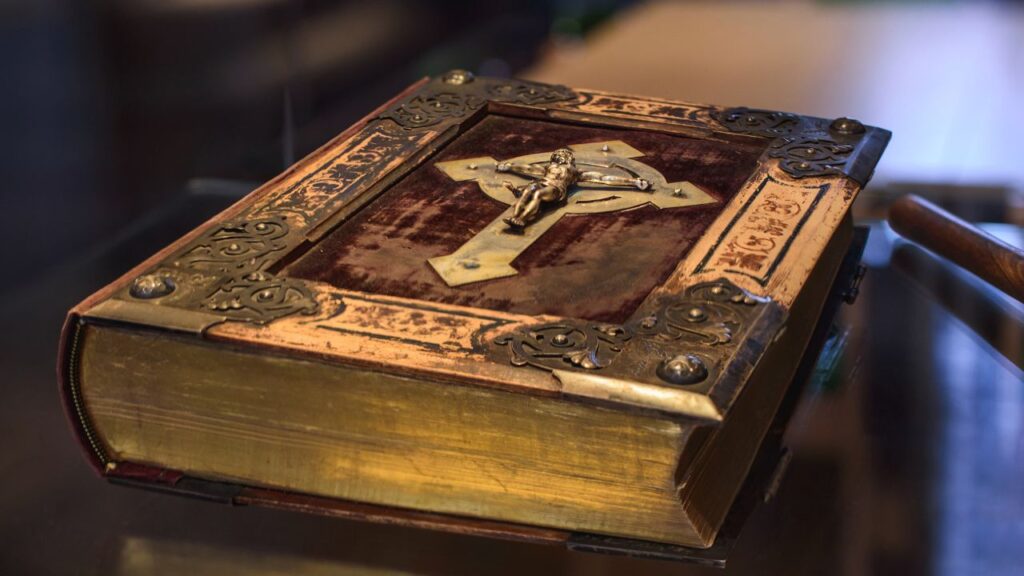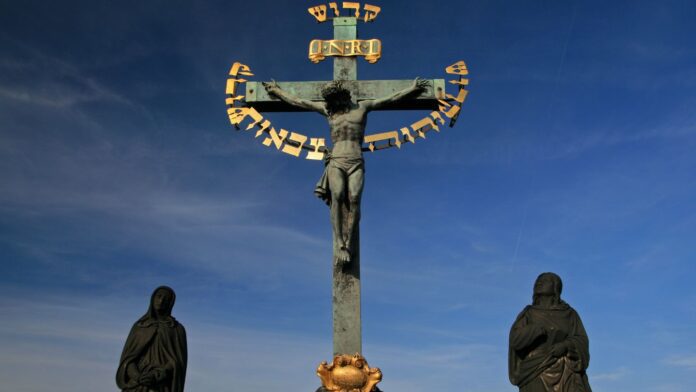Crucifixes as sacred symbols have captivated hearts and minds for nearly two millennia, standing as silent witnesses to faith in countless homes, churches, and around the necks of believers worldwide. There’s something profoundly moving about these carved figures that transcends mere religious decoration – they’re living prayers made manifest in wood, metal, and stone.
I’ve walked through ancient cathedrals where massive crucifixes dominate the altar space, their presence commanding reverence from even the most casual visitor. Equally powerful are the humble wooden crosses hanging in suburban kitchens, watched over by generations of families who’ve found comfort in their quiet presence. Each tells a story not just of faith, but of the remarkable human desire to create beauty from belief.
What strikes me most is how every crucifix, regardless of its material or maker, carries within it centuries of theological meaning, artistic tradition, and personal devotion. Behind each piece lies a craftsperson’s careful attention to detail, a buyer’s spiritual discernment, and ultimately, a community’s shared understanding of what makes something truly sacred.
The Symbolism of the Crucifix in Christian Tradition

The crucifix speaks in a language older than words, communicating truths that sermons sometimes struggle to convey. At its heart lies the central mystery of Christianity – God’s ultimate sacrifice for humanity’s redemption. The figure of Christ upon the cross doesn’t merely represent suffering; it embodies triumph over death itself, transforming an instrument of execution into a symbol of hope.
I find it fascinating how different Christian traditions have approached crucifix symbolism over the centuries. Catholic crucifixes typically feature the corpus – Christ’s body – rendered in often startling detail, emphasising the reality of the incarnation and passion. Orthodox traditions favour similar approaches, though their artistic styles carry distinct Byzantine influences that speak to different cultural expressions of the same faith.
Protestant churches often prefer the empty cross, focusing on the resurrection rather than the crucifixion itself. Neither approach is superior; they’re simply different theological emphases made visible through art. The crucifix invites us to contemplate both the cost of salvation and its glorious outcome.
The Living Presence of a Sacred Object
What transforms a crucifix from religious artwork into something truly sacred isn’t just its imagery – it’s the prayers offered before it, the tears shed in its presence, and the quiet moments of contemplation it inspires. I’ve noticed how families often develop almost personal relationships with their household crucifixes, turning to them during times of crisis, celebration, and everyday uncertainty.
These aren’t merely decorative pieces gathering dust on mantelpieces. They’re spiritual anchors, visual reminders of divine presence that invite daily reflection and prayer. There’s something deeply comforting about having a physical focus for worship, especially in our increasingly digital world.
Craftsmanship Through the Ages
The evolution of crucifix craftsmanship tells the story of Christianity itself. Early Christians, working in secret and often in poverty, carved simple crosses from whatever materials they could find – rough wood, soft stone, even scratched into catacomb walls. These primitive symbols carried no less spiritual power than their more elaborate descendants.
Medieval artisans elevated crucifix-making to high art, creating breathtaking pieces in gold and ivory that still grace museum collections today. These craftsmen understood that creating sacred art wasn’t just about technical skill – it was a form of prayer itself, each chisel stroke an act of devotion.
You can explore a selection of beautiful handcrafted crucifixes in different styles and materials perfect for any devotional setting, where contemporary artisans continue this ancient tradition. Today’s makers blend time-honoured techniques with modern tools, creating pieces that honour the past while speaking to contemporary sensibilities.
What impresses me most about current crucifix craftsmanship is how artisans manage to infuse traditional forms with fresh expressions. They’re not simply copying medieval patterns; they’re creating new interpretations that reflect our current understanding of faith while maintaining the essential symbolism that makes these pieces spiritually powerful.
Materials that Speak
Each material used in crucifix construction carries its own symbolic resonance and aesthetic appeal. Olivewood, harvested from the Holy Land, connects us directly to Christ’s earthly ministry. Its warm golden tones and distinctive grain patterns make each piece unique, whilst its biblical associations add layers of meaning to daily prayer.
Silver and pewter crucifixes offer different qualities entirely. Their cool, reflective surfaces catch candlelight beautifully, creating an almost ethereal quality that enhances meditation. These metals also age gracefully, developing patinas that tell stories of countless prayers and gentle handling over the years.
Porcelain and ceramic crucifixes bring their own charm, often featuring delicate painted details that wouldn’t be possible in other materials. Though more fragile, they offer artists opportunities to incorporate colour and fine artistic details that can make religious imagery more accessible, particularly for children.
Even modern materials like resin and composite substances have found their place in contemporary crucifix design. These allow for mass production of affordable pieces without sacrificing aesthetic appeal, making sacred art accessible to broader audiences.
Choosing a Crucifix for Your Home or Parish
Selecting the right crucifix involves more than just aesthetic preference – it’s about finding a piece that will genuinely enhance your spiritual life. Size matters more than you might think. A massive crucifix might overwhelm a small prayer corner, whilst a tiny piece could get lost in a large room.
Consider your prayer habits and household dynamics when making your choice. Families with young children might prefer sturdier materials and simpler designs, whilst those seeking intensive contemplative practice might gravitate toward more detailed artistic pieces that reward extended viewing.
Key considerations include:
- Placement and proportion – measure your intended space carefully
- Lighting conditions – some materials and finishes work better in different light
- Maintenance requirements – delicate materials may need special care
- Blessing arrangements – most parishes will happily bless new crucifixes
The blessing of a new crucifix isn’t just ceremonial nicety; it formally designates the piece as a sacred object within your home. This simple ritual transforms craftsmanship into sacramental, creating a spiritual focal point that will serve your family for generations.
A Personal Connection
I’ve noticed that people often feel immediately drawn to particular crucifix designs, even when they can’t articulate why. Trust these instincts – they’re often expressions of deeper spiritual needs and aesthetic preferences that will enhance your prayer life over time.
Your choice might reflect your current spiritual journey. Someone seeking comfort during illness might prefer a gentle, peaceful representation of Christ, whilst someone focused on spiritual discipline might choose a more austere, challenging piece. Neither choice is wrong; they’re simply different responses to faith’s varied demands.
The Crucifix as a Work of Faith and Art

The beauty of crucifix craftsmanship lies in its perfect marriage of artistic skill and spiritual devotion. These pieces stand as testament to humanity’s enduring need to create beauty from belief, to transform faith into something tangible that can be touched, seen, and treasured.
When I consider the countless hours artisans have spent perfecting their craft – not for fame or fortune, but from genuine desire to create worthy offerings for sacred use – I’m reminded that the best crucifixes aren’t just religious objects. They’re prayers made visible, faith carved into lasting form, and spiritual heritage preserved for future generations.
Whether you choose a simple wooden cross or an elaborate artistic masterpiece, remember that you’re not just acquiring decoration. You’re welcoming a sacred presence into your home, creating a space where heaven and earth meet in quiet contemplation. In our busy world, these crucifixes as sacred symbols continue to offer the timeless gift of focused prayer and peaceful reflection.

















![10 Countries With the Best Healthcare in the World [Statistical Analysis] Countries With the Best Healthcare in the World](https://articleify.com/wp-content/uploads/2025/07/Countries-With-the-Best-Healthcare-in-the-World-1-150x150.jpg)










